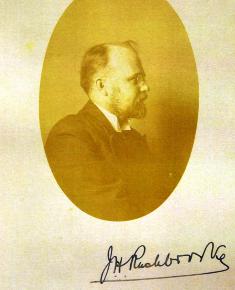The first service of the Free Church on the Suburb was held on 16 May 1909. The construction of the Free Church building was started on 16 January 1911 with completion in October of that year. The membership was to be drawn from all Non-conformist denominations. The Minister was not to be an Anglican from the Church of England or a Catholic. The Foundation Stone bore the words “”God is larger than the Creeds” and children laid bricks with their initials inscribed.
The Free Church was the first ecumenical church of this type in the country and in early years developed a range of activities for the community. From 1908 these included educational work such as “scouting, guiding and young people’s clubs”. More recent activities have been a drop-in meals service for a local school with counselling on offer, facilities for different language groups, and flower and crafts festivals. The Church has provided professionally trained doula support for the youngest and oldest in the community. So the Church and Hall provide for both the Church’s own activities and as a home for various community organisations, including a pre-school play group, youth and children’s activities, monthly concerts and major choral events, and a home for an orchestra. Church members assist in the running of Suburb and wider groups including sheltered housing for the elderly.
The first minister was the Revd. Dr. James Henry Rushbrooke MA (1910-1922) a Baptist who did much work in re-building the Baptist church in Rumania, Russia and elsewhere after the First World War. The Revd. William Major Scott MA, Congregationalist (1922-1931), was followed by the Revd. Frank Hewitt Ballard MA, also a Congregationalist (1933-1951), and by the Revd. J Stanley Andrews MA, a Baptist (1952-1960). The Revd, Peter Barraclough MA a Congregationalist who became a United Reformed Church Minister was the next minister (1961-1992), succeeded by the Revd. Tony Spring MA (1994-2004) from the United Reformed Church, and then by the Revd. Dr Ian Tutton MA, a Baptist, from 2005 to the present day. The Ministers, wives and families have contributed much of value to the Church and community.
The Revd. William Major Scott MA, Congregationalist (1922-1931), was followed by the Revd. Frank Hewitt Ballard MA, also a Congregationalist (1933-1951), and by the Revd. J Stanley Andrews MA, a Baptist (1952-1960). The Revd, Peter Barraclough MA a Congregationalist who became a United Reformed Church Minister was the next minister (1961-1992), succeeded by the Revd. Tony Spring MA (1994-2004) from the United Reformed Church, and then by the Revd. Dr Ian Tutton MA, a Baptist, from 2005 to the present day. The Ministers, wives and families have contributed much of value to the Church and community.
As well as the Church, a Grade One listed building designed by Lutyens, within its curtilage is the Manse (home for the Minister and family, and Church Hall listed by LB Barnet .). The Hall was opened in 1925 by the Speaker of the House of Commons and the Suburb was visited by the Queen on this occasion. The Hall in its early days was the subject of a failed arson attempt by the Suffragettes, and in 1978 was badly damaged by fire in the middle of the night, the alarm being given by a neighbour’s dog.
While being closely associated with the Baptists and United Reformed Church, the Free Church is independent of all other organisations. The ethos of the Church is of toleration in a Christian religious setting. In early days the Church provided accommodation for Jewish meetings planning for a synagogue, and later unanimously agreed through Church meeting the use of the Church by the synagogue during refurbishment of their premises. The congregation and visitors are mixed by nationality and race and the Church welcomes all to activities and worship. The Church is twinned with the Eglise Reformee at Montrouge, Paris. A number of distinguished people have been members of the Free Church, including Prime Minister Harold Wilson and Mary Wilson.